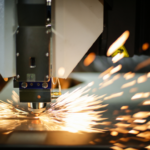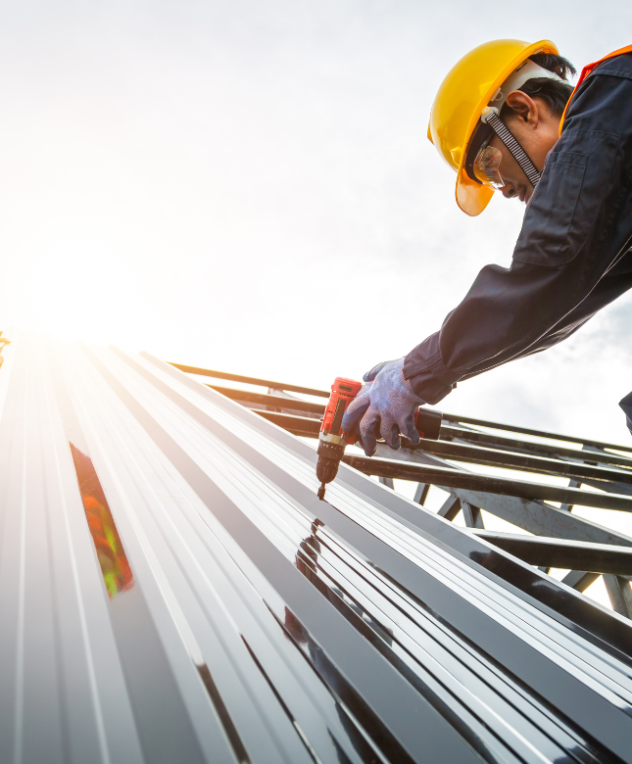
Step-by-Step Instructions for Using a Bending Machine
Step-by-Step Instructions for Using a Bending Machine
Here’s an overview:
Introduction to Bending Machines
Types of Bending Machines
Safety Procedures for Operating a Bending Machine
Setting Up and Preparing the Bending Machine
Understanding the Bending Process
Troubleshooting Common Bending Machine Issues
Maintenance Tips for Bending Machines
Advanced Techniques for Operating a Bending Machine
Creating Complex Bends with a Bending Machine
Best Practices for Efficient Bending Machine Operations
Introduction to Bending Machines
- Bending machines are versatile tools used to shape metal sheets and pipes with precision.
- These machines come in various types, such as manual, hydraulic, or CNC, each catering to different bending needs.
- Understanding the basics of bending machines is crucial for achieving accurate and consistent bends.
- With the right setup and technique, bending machines can create complex shapes and angles efficiently.
- Safety precautions must be followed when operating bending machines to prevent accidents and ensure a smooth bending process.
Types of Bending Machines
There are four main types of bending machines commonly used in metalworking:
- Press Brake: A press brake is the most common type of bending machine. It uses a punch and die to bend the metal along a straight axis.
- Tube Bender: As the name suggests, a tube bender is specifically designed to bend tubes and pipes. It can create precise bends without damaging the tube.
- Roll Bending Machine: This type of machine is used to create curves and arcs in metal sheets. It gradually bends the metal by passing it through a series of rolls.
- Section Bending Machine: Also known as a profile bending machine, this tool is used to bend metal profiles and beams. It is commonly used in construction and manufacturing industries.
Each type of bending machine serves a specific purpose and is chosen based on the requirements of the metalworking project.
Safety Procedures for Operating a Bending Machine
- Wear Personal Protective Equipment (PPE): Ensure to wear safety glasses, gloves, and hearing protection to prevent injuries.
- Inspect the Machine: Prior to operation, check the machine for any visible damage or defects. Do not operate a faulty machine.
- Follow Operating Instructions: Familiarise yourself with the manufacturer’s guidelines for operating the bending machine safely and correctly.
- Secure Workpiece: Always secure the workpiece properly using clamps or fixtures to prevent it from moving during bending.
- Use Two-Hand Controls: When operating the machine, use both hands on the control buttons to ensure safe and controlled bending.
- Keep Hands Clear: Avoid placing your hands near moving parts of the machine during operation. Use tools or push sticks when necessary.
- Emergency Stop: Be aware of the emergency stop button location and how to use it in case of any unexpected situations.
- Training: Only trained personnel should operate the bending machine to minimise the risk of accidents.
Setting Up and Preparing the Bending Machine
- Ensure Proper Placement: Position the bending machine on a flat and stable surface to prevent any accidents during operation.
- Check Power Supply: Make sure the machine is connected to a suitable power source and that the power switch is in the off position before plugging it in.
- Adjust the Settings: Set the desired angle and radius on the bending machine according to the specifications of the job.
- Load the Material: Place the material to be bent securely in the bending machine, ensuring it is aligned correctly with the bending die.
- Test Run: Before starting the actual bending process, perform a test run with scrap material to ensure everything is set up correctly.
- Safety Gear: Always wear appropriate safety gear such as gloves and goggles to protect yourself during the bending process.
Understanding the Bending Process
- A bending machine uses force to shape metal sheets or tubes.
- The material is placed between the bending machine’s rollers.
- The machine exerts pressure, causing the material to bend.
- The operator controls the angle and degree of the bend.
- Different dies can be used to achieve various bending shapes.
- Understanding the properties of the material is crucial for successful bending.
- Bending radius and bend allowance calculations are essential for accuracy.
- Practice and experimentation help in mastering the bending process.

Troubleshooting Common Bending Machine Issues
- Uneven Bends:
- Check the alignment of the material in the machine.
- Ensure the tooling is installed correctly and not worn out.
- Adjust the machine settings for more uniform bends.
- Cracks or Tears in the Material:
- Slow down the bending process to reduce stress on the material.
- Check the material thickness and adjust the machine settings accordingly.
- Machine Not Powering On:
- Check the power source and ensure it is properly connected.
- Inspect the machine’s electrical components for any issues.
- Reset the machine according to the manufacturer’s guidelines.
- Irregular Bends:
- Verify that the material is positioned correctly in the machine.
- Check for any obstructions or debris that may be affecting the bending process.
- Calibrate the machine according to the instructions in the manual.
Maintenance Tips for Bending Machines
- Regularly inspect the machine for any signs of wear and tear.
- Keep the machine clean and free of dust and debris.
- Lubricate moving parts as recommended by the manufacturer.
- Check and replace any worn-out or damaged components.
- Calibrate the machine regularly to ensure accurate bending.
- Train operators on proper machine use and maintenance practices.
- Store the machine in a dry and secure location when not in use.
Advanced Techniques for Operating a Bending Machine
- Utilize different tooling attachments for complex bends.
- Experiment with various bending speeds to achieve desired results.
- Implement back-gauges and reference points for precise bends.
- Explore the use of custom-made bending dies for unique shapes.
- Familiarize yourself with multi-step bending processes for intricate designs.
Creating Complex Bends with a Bending Machine
- Understand the capabilities of your bending machine before attempting complex bends.
- Use the appropriate tooling and die sets for the specific bend requirements.
- Adjust the machine settings for bend angle, bend radius, and material thickness.
- Secure the material firmly in place to prevent slippage during the bending process.
- Gradually feed the material through the machine while maintaining a consistent speed.
- Check the bend quality periodically and make adjustments as needed.
- Practice caution when creating intricate bends to avoid material distortion or machine damage.
Best Practices for Efficient Bending Machine Operations
- Safety First: Always wear appropriate personal protective equipment (PPE) such as gloves and goggles to prevent accidents.
- Material Preparation: Ensure materials are clean and free of any defects before bending to avoid damage to the machine or imperfect bends.
- Proper Tool Selection: Use the correct tooling for the job to achieve precise and accurate bends.
- Machine Setup: Follow the manufacturer’s instructions to set up the bending machine correctly for the material being used.
- Bend in Stages: For complex bends, perform multiple smaller bends rather than trying to achieve the final shape in one go.
- Regular Maintenance: Keep the bending machine well-maintained and lubricated to ensure optimal performance and longevity.
Operator Training: Train operators on how to use the bending machine safely and efficiently to improve productivity and reduce errors






